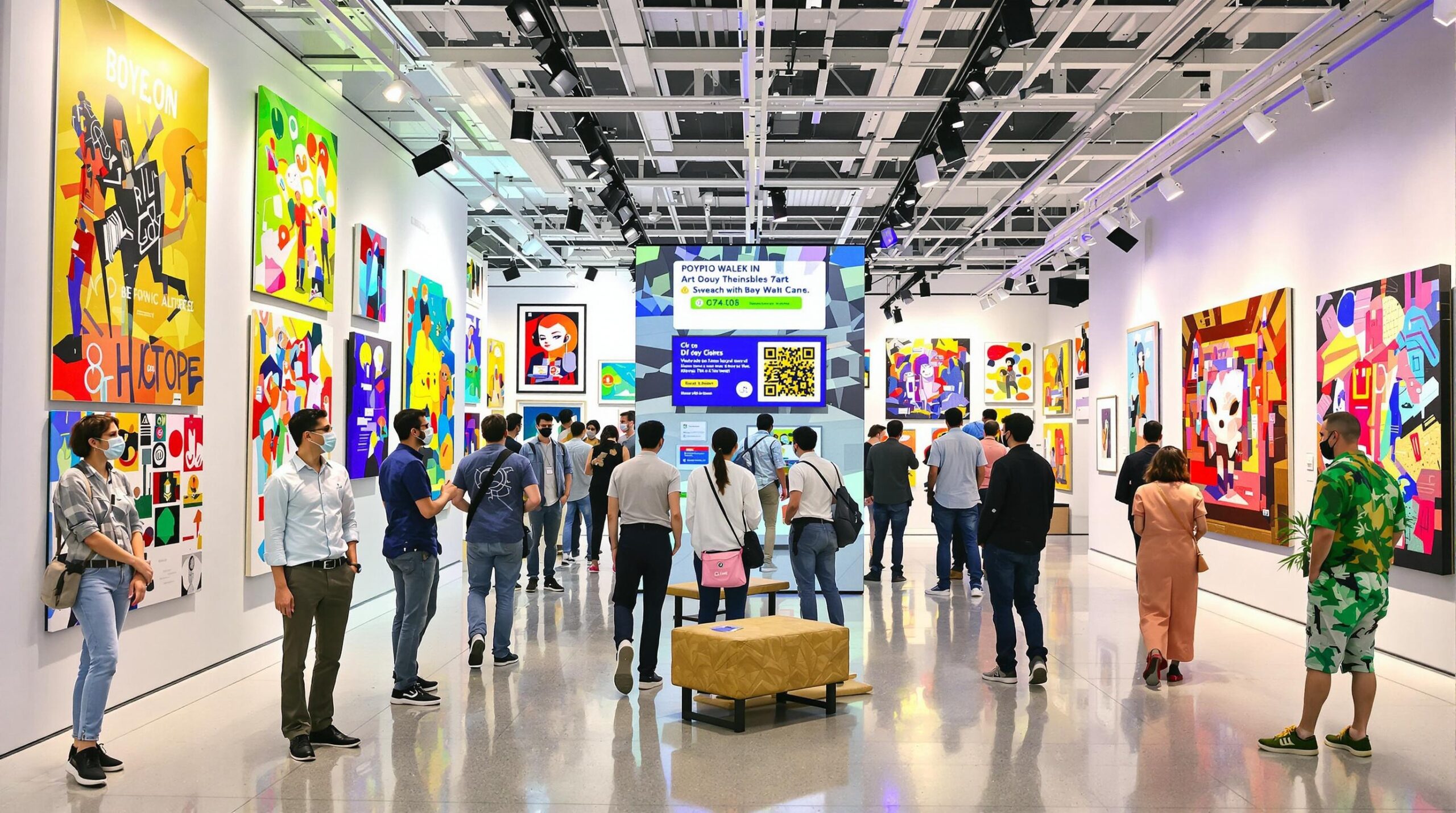Introduction to Art and Blockchain
The traditional art world has relied upon galleries, auction houses, and intermediaries for centuries. These institutions authenticate, value, and sell artwork, often at a high cost to artists and buyers. However, the digital age brings new challenges and opportunities to this system. Crypto startups are harnessing the power of blockchain technology to revolutionize the creation, sale, and ownership of art. This innovative approach is reshaping the artistic landscape, offering artists and collectors a dynamic new way to engage with their passion.
The Challenges of the Traditional Art Market
Conventional art sales face significant issues, including fraud, forgery, and a lack of transparency. Provenance data, which records the ownership of artwork, can be easily manipulated or lost. This lack of trust frequently deters new collectors and artists from actively engaging in the market. Fees charged by middlemen reduce artists’ profits, and many talented creators struggle to get noticed.
Blockchain: The Trustworthy Ledger
Blockchain technology operates as a decentralized ledger that securely and permanently records transactions. Every change or sale involving a digital asset gets documented with a timestamp on this ledger. These records cannot be altered, providing a trustworthy chain of custody. For the art world, blockchain offers transparency, security, and verification of authenticity with each transaction.
The Rise of Crypto Startups in Art Sales
Dozens of startups now combine art sales with blockchain infrastructure. Notable companies include SuperRare, Async Art, MakersPlace, and Foundation. These platforms enable artists to mint their digital art as unique, non-fungible tokens on the blockchain, also known as NFTs. Buyers can purchase, resell, or showcase these digital assets through supportive online marketplaces.
Empowering Artists and Eliminating Middlemen
Artists have historically relied on galleries and agents to reach buyers. Crypto startups allow creators to sell their work directly to collectors worldwide. This shift eliminates traditional commissions and increases artists’ profits. Blockchain-based contracts automate royalty payments, ensuring artists earn a percentage every time their work is resold. These mechanisms establish a fairer and more sustainable creative ecosystem.
Provenance and Authenticity Redefined
Authenticating art used to require expert examination and extensive paperwork. Blockchain provides a transparent and immutable record of each artwork’s history and ownership. Buyers can view provenance in real-time and efficiently verify the origin of each piece. This capability significantly reduces fraud and ensures that collectors purchase authentic works from verified creators.
Fractional Ownership and Accessibility
Crypto startups are also introducing fractional ownership to the art marketplace. This model allows multiple investors to own shares of an individual artwork. People can now collectively own high-value pieces that were previously accessible only to a select few. Fractional ownership lowers the barrier to entry, enabling diverse investors to participate in art collections and potentially appreciate their value.
Global Reach and Community Building
Blockchain-based art platforms extend globally from the very beginning, surpassing the localized reach of most galleries. Collectors from any country can explore, bid on, and purchase artwork without geographic restriction. Artists gain exposure to a vast, enthusiastic audience passionate about digital art and technology. Communities form around both creators and collectors, driving increased engagement and collaboration.
Intelligent Smart Contracts
Smart contracts underlie many blockchain-enabled art transactions. These self-executing agreements are triggered when preset conditions are met, eliminating the need for manual oversight. For art sales, smart contracts can automate payment disbursement, royalty payments, and transfer of ownership. This innovation reduces administrative burdens and enhances trust between all parties involved.
Environmental Concerns and Evolving Solutions
The shift toward blockchain art sales is not without obstacles. Many blockchains require a significant amount of computing power, raising environmental concerns about energy use. However, startups now seek greener solutions using energy-efficient consensus algorithms, such as proof-of-stake. Ethereum’s recent upgrades and newer blockchains aim to reduce carbon footprints while still powering vibrant art marketplaces.
Changing the Definition of Art Ownership
Crypto startups challenge existing ideas of what it means to own art. Digital files, once thought to be endlessly replicable, gain value and uniqueness as NFTs. Owners can display, transfer, and even interact with digital art in virtual galleries or through augmented reality. Rather than physical possession, the ownership record becomes the central proof of value and authenticity.
New Creative Possibilities
Blockchain technology is catalyzing novel forms of artistic expression. Programmable art—where a piece can evolve based on time, data, or collector input—is now possible. Artists experiment with interactive art forms and dynamic media, further blurring the boundaries between creator, collector, and participant. Crypto startups foster this spirit of innovation by offering tools and incentives for experimentation.
Challenges and Growing Pains
The rapid rise of crypto art markets brings its own set of growing pains. Speculation and hype can sometimes overshadow the intrinsic artistic value of a work. Regulatory uncertainty poses risks to startups and participants, as different countries interpret digital asset laws in varied ways. Nonetheless, the sector continues to mature, and many startups actively pursue best practices in transparency and consumer protection.
The Future Outlook
Crypto-driven innovations in art sales appear poised to continue expanding and evolving. More established art institutions and auction houses experiment with blockchain and NFTs in parallel with startups. Technical, ethical, and regulatory questions still need answers, but the trend toward decentralization remains strong. As trust in blockchain grows, mainstream adoption could make blockchain-backed art sales a standard practice.
Impact on the Wider Art Ecosystem
Blockchain startups are changing not just the sales process but also how art is valued and enjoyed. Museums and galleries begin to incorporate digital artworks into their exhibitions. New revenue streams and collector bases emerge as art becomes increasingly accessible online. Startups help bridge physical and digital divides, ensuring that art—and its rewards—are available to a broader audience.
Conclusion
Crypto startups are fundamentally redefining art sales by strategically using blockchain technology. By increasing transparency, empowering artists, reducing costs, and expanding reach, they dramatically reshape how the world creates, buys, and enjoys art. As innovations continue and the technology evolves, the synergy between art and blockchain promises a transformative future full of creative opportunity.


